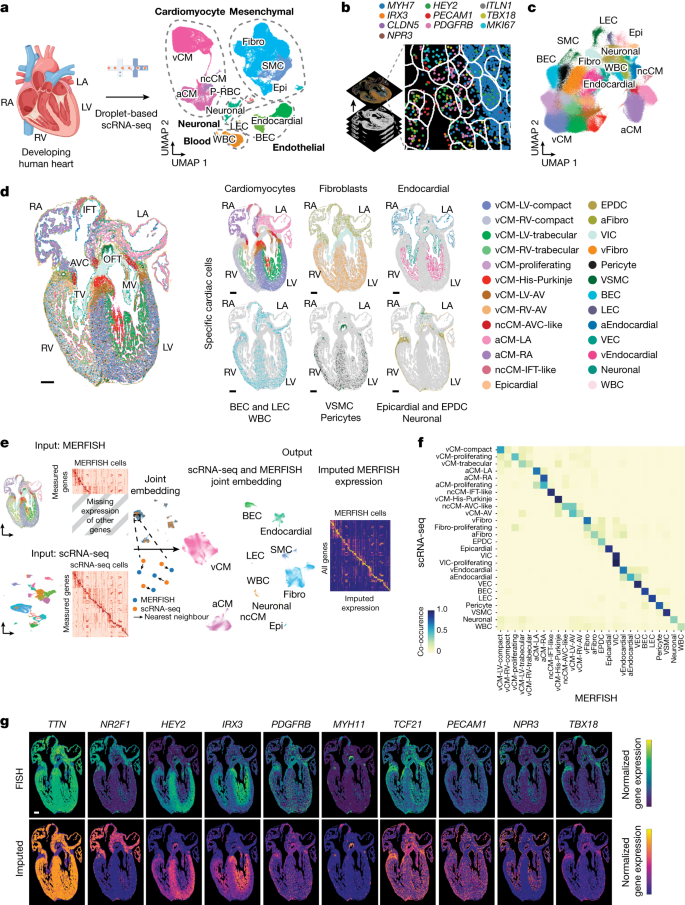2024-03-13 カリフォルニア大学サンディエゴ校(UCSD)
<関連情報>
- https://today.ucsd.edu/story/communities-of-the-heart
- https://www.nature.com/articles/s41586-024-07171-z
発達中のヒト心臓を形成する空間的に組織化された細胞コミュニティ Spatially organized cellular communities form the developing human heart
Elie N. Farah,Robert K. Hu,Colin Kern,Qingquan Zhang,Ting-Yu Lu,Qixuan Ma,Shaina Tran,Bo Zhang,Daniel Carlin,Alexander Monell,Andrew P. Blair,Zilu Wang,Jacqueline Eschbach,Bin Li,Eugin Destici,Bing Ren,Sylvia M. Evans,Shaochen Chen,Quan Zhu & Neil C. Chi
Nature Published:13 March 2024
DOI:https://doi.org/10.1038/s41586-024-07171-z

Abstract
The heart, which is the first organ to develop, is highly dependent on its form to function1,2. However, how diverse cardiac cell types spatially coordinate to create the complex morphological structures that are crucial for heart function remains unclear. Here we integrated single-cell RNA-sequencing with high-resolution multiplexed error-robust fluorescence in situ hybridization to resolve the identity of the cardiac cell types that develop the human heart. This approach also provided a spatial mapping of individual cells that enables illumination of their organization into cellular communities that form distinct cardiac structures. We discovered that many of these cardiac cell types further specified into subpopulations exclusive to specific communities, which support their specialization according to the cellular ecosystem and anatomical region. In particular, ventricular cardiomyocyte subpopulations displayed an unexpected complex laminar organization across the ventricular wall and formed, with other cell subpopulations, several cellular communities. Interrogating cell–cell interactions within these communities using in vivo conditional genetic mouse models and in vitro human pluripotent stem cell systems revealed multicellular signalling pathways that orchestrate the spatial organization of cardiac cell subpopulations during ventricular wall morphogenesis. These detailed findings into the cellular social interactions and specialization of cardiac cell types constructing and remodelling the human heart offer new insights into structural heart diseases and the engineering of complex multicellular tissues for human heart repair.


